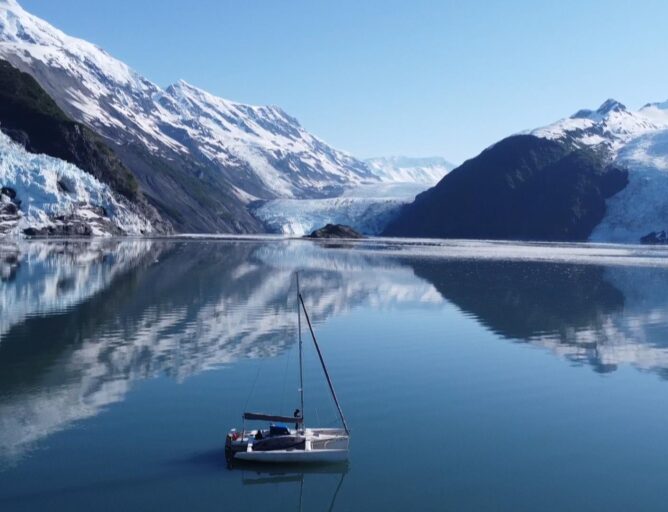Rich du Moulin, Chair ST Foundation and STC Seamanship Committee, reports on an interesting expansion of STC’s ongoing safety at sea initiatives.
Since 1997 when we started Junior SAS and in 2006 with Adult SAS Seminars, the significant level of STC members’ volunteerism has provided the great library of SAS videos and documents that are freely available to the sailing public on our website. Executive Director Whitney Simon frequently receives safety and seamanship questions from the public to which we always respond. This latest inquiry resulted from a fun series of coincidences.
STC’s first Adult SAS in Texas was chaired by Chris Lewis in 2018 at the Lakewood YC on Galveston Bay. In 2020, it shifted to the Houston YC and in 2023 to the Austin YC on man-made Lake Travis. Some of the key local organizers in Austin were multihull sailors Pete Pattullo, Michael Moran, and Martin Brown. In fact, we used three trimarans at the seminar for on-the-water drills. All these folks are now members, and Pete and I head up Multihull MOB for US Sailing and STC. With STC multihulls as the back story, it was fun recently to correspond with a new friend in Alaska, Andrew Adam, who extensively cruises his F27 trimaran up there. The following email exchange was both fun and educational, but our socks were knocked off when Andrew, at our request, sent us the photograph of his cruising grounds.
Email from: Andrew Adam
Just reaching out to see if I can get available reference to MOB training for trimarans. Concerned with an approach to leeward of the victim, and the possibility of a hull falling on them during recovery. For reference, I’m usually cruising shorthanded and use a Lifesling for MOB recovery. Also was curious if there is a preferred AIS transmitting device for small children to wear. The adult crew all have MOB1s, but the child PFD does not work with this system.
Rich: Andrew, thanks for your good questions. The expert at trimarans is our member Pete Pattullo who extensively races his 32-foot tri and is leading our R&D for multihulls, but here are some Quick answers:
1) The risk of the Windward ama dropping on the mob is why Pete prefers the mob to be on the leeward side with wind pressure on the luffing main and crew weight keeping the ama depressed,
2) I have not seen any immersion-induced AIS other than the routine of the string around the inflation chamber which I frankly don't fully trust. The best current alternative might be to attach an AIS to your kids; PFDs and teach them how to turn it on?
On my boat for offshore sailing, I have a small two foot tall (cutoff) mooring tallboy buoy with an AIS taped about a foot up the stick. In a mob situation, I switch it on and throw it overboard. It may be a few boat lengths from the mob but gets you back very close.
From Andrew: Pete and Richard, thank you for all the information! This appears to be almost identical to what we developed on our F27. Regarding question #2 this seemed to mirror what my research had indicated. Thanks again for all the help!
From Rich: Andrew- where do you cruise in Alaska? The water probably is pretty cold so the most important thing would be to wear PFDs because that’s the only way to stay afloat while awaiting recovery. Just had two MOB rescued in Seattle area videoed from a nearby ferry. Water is 47 degrees. Serious hypothermia but the PFDs kept them afloat.
From Andrew: I agree. The water temperature is brutal and can easily be underestimated. I always encourage visitors to try a walk into the ocean to get an understanding that if you fall overboard without equipment, you might as well be falling off of a building. We wear drysuits, PFD, and EPRBs, as a matter of course, and tether to jacklines the moment any sea state develops. My wife and I almost always cruise as a couple, and the multihull has proven challenging for MOB recovery. I always appreciate watching the videos that the Storm Trysail Club produces regarding safety at sea. Thanks again!
I appreciate the assistance. I can't remember how I ran across the Storm Trysail Foundation, but I am always searching for safety content and ways to mitigate risk aboard.

